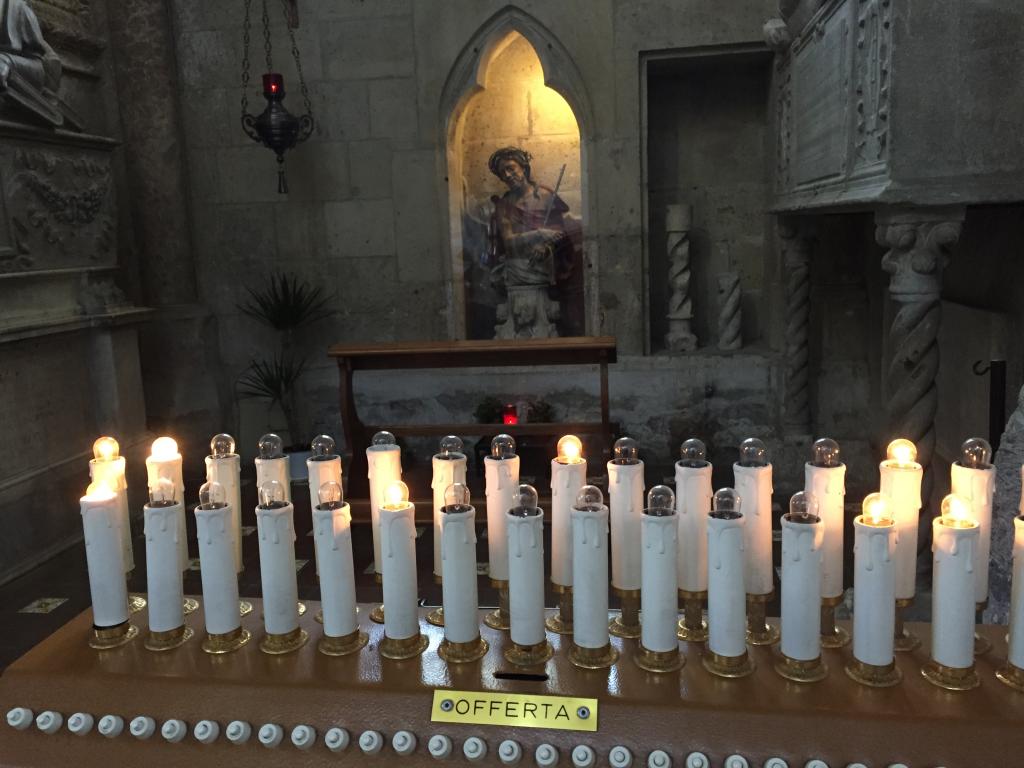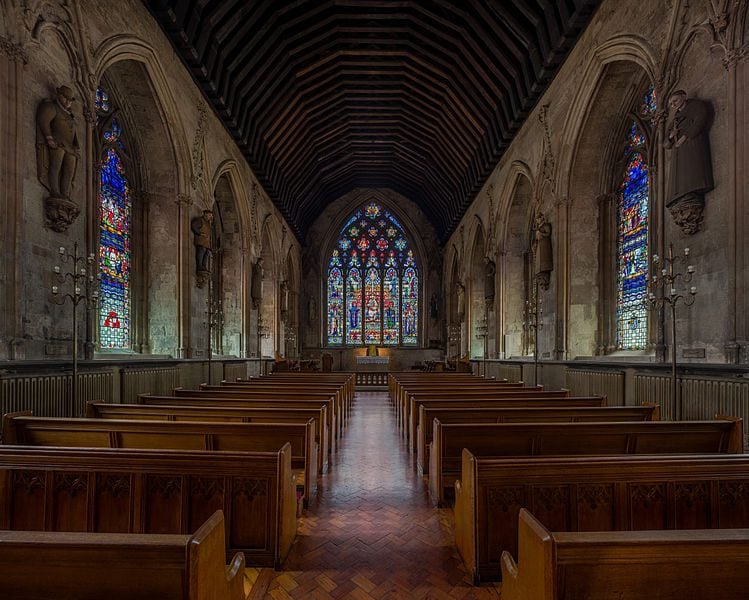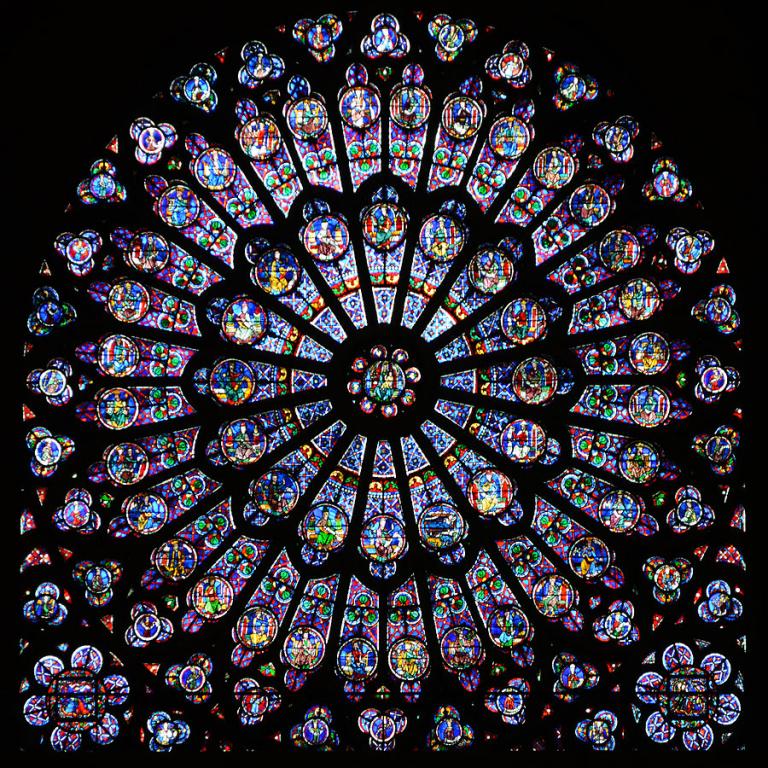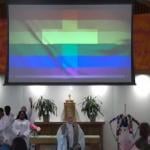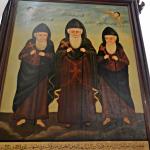So last weekend, we were visiting my parents, having last been there at Thanksgiving. And Sunday morning, for church, we paid a visit to Christ Our Light! Catholic Church (yes, you need the exclamation point there just as much as when writing about Jeb! Bush).
Here’s the story behind this church:
Up until 2013, this was St. Alan’s Church — but in that year, at the command of the Archdiocese of Detroit, this parish merged with St. Columban of Birmingham, a bit over a mile away as the crow flies. As described in the suburban Oakland Press,
Joe Kohn, spokesman for the Archdiocese of Detroit, said that decisions are well-planned in advance. In this case, more than a year of planning happened.
“In the case of St. Columban and the parish closing, or merging with St. Alan, the decision was made because of long-term trends and it was made between the parish faithful and their pastor. … (In recent years, there has been) fewer parishioners and an aging of parish population,” Kohn said.
There was no present financial issues, but the number of parishioners declined from 600 to 400 in the past five years, Kohn said.
The the article further reports that the “vast majority” of parishioners were expected to make the move to the new parish, though for those coming from the west, there’s another church a mile away that might have likewise been a natural choice.
So what happened?
Christ Our Light!’s priest, on their home page, says this:
Christ, Our Light! is a small community of 800 families surrounded by larger Catholic parishes. The first question is “Do you want smaller?” Our worship space has been beautifully and comfortably refurbished. We are blessed by two very talented Ministers of Music, an active Ministry of Evangelization and Service, a strong program of Religious Education and Faith Formation for adults, children and Special Needs families and their children.
And the church does look nice and fresh. Their bulletin isn’t jam-packed with activities, but they’re having a St. Patrick’s Day party, and jointly sponsoring a blood drive with a nearby Lutheran church, as well as collecting for a food pantry and preparing meals for the rotating-church homeless shelter. The church was reasonably full, the congregation did an acceptable job singing, and even (you know this is coming) stayed in their pews until the end of the closing song.
What’s their future? If St. Columban had 400 members, and Christ Our Light! has 800 families, then either St. Alan was already healthier than St. Columban, or the article’s statement of 400 really already referred to families, and, if St. Alan was similarly sized, then their numbers held steady. And perhaps the decline — which must have been occurring at both parishes, or else the merged congregation wouldn’t fit comfortably into the newly merged (but renovated in the same footprint) building — was a matter of demographics, if the neighborhoods were simply aging and now full of empty nesters.
But it’s also entirely possible that the drop in numbers is due to the younger generation still living nearby (there is, after all, a massive apartment complex across the street, likely the home to lots of young adults) but simply having left the church.
Hence, the K-Mart building – that is, the now-abandoned former World Headquarters for K-Mart Corporation.
OK, it’s not literally in the shadows of the K-Mart building, but very nearly so, half a mile away. And, as it happens, I grew up similarly in the “shadows of the K-Mart building” in the opposite direction. My younger brother even worked there for a time, before it closed in 2006 when K-Mart moved its headquarters to Sears’ suburban Chicago location during the merger of the companies.
And, despite the merger of the two companies, neither Sears nor K-Mart has been able to find their way, as each year brings new reports of closing more locations. K-Mart has not managed to find a way to compete with Walmart (other than, “maybe one of our locations might be closer to your home”), and Sears has not managed to find a new niche when its old one (that is, one stop shopping for everything from tools and appliances to clothes and linens) became obsolete in the era of big-box stores. Perhaps the merger has prolonged their slow decline, but they don’t seem to have stabilized.
So is this merger a path forward — a way to manage what you might gently call demographic shifts, and restore vitality? Or is it merely a way to manage inevitable and long-term decline?
(Incidentally, whatever problems Catholicism and Christianity are having in the U.S., a recent article on the Church of England reports that they’re much further down the path of managing the decline — with the number of Brits attending church on average per week consisting of 1.8% of the population, forecast to drop to 1.0%, and with only 40% of Brits even professing a belief in Christianity.)



